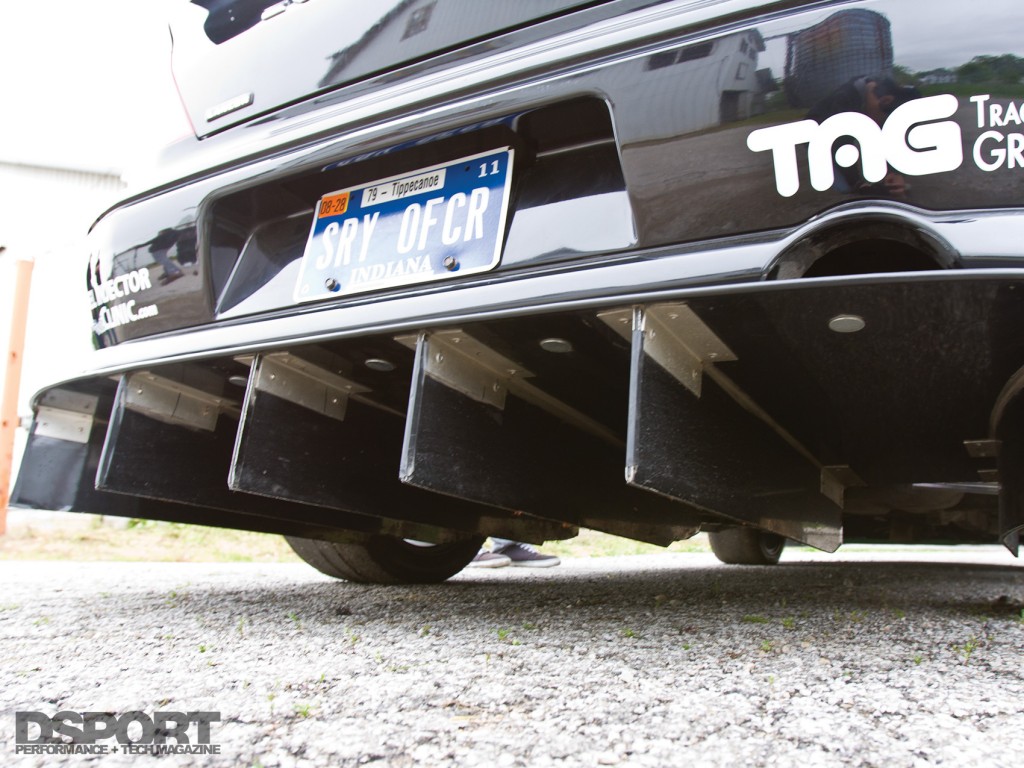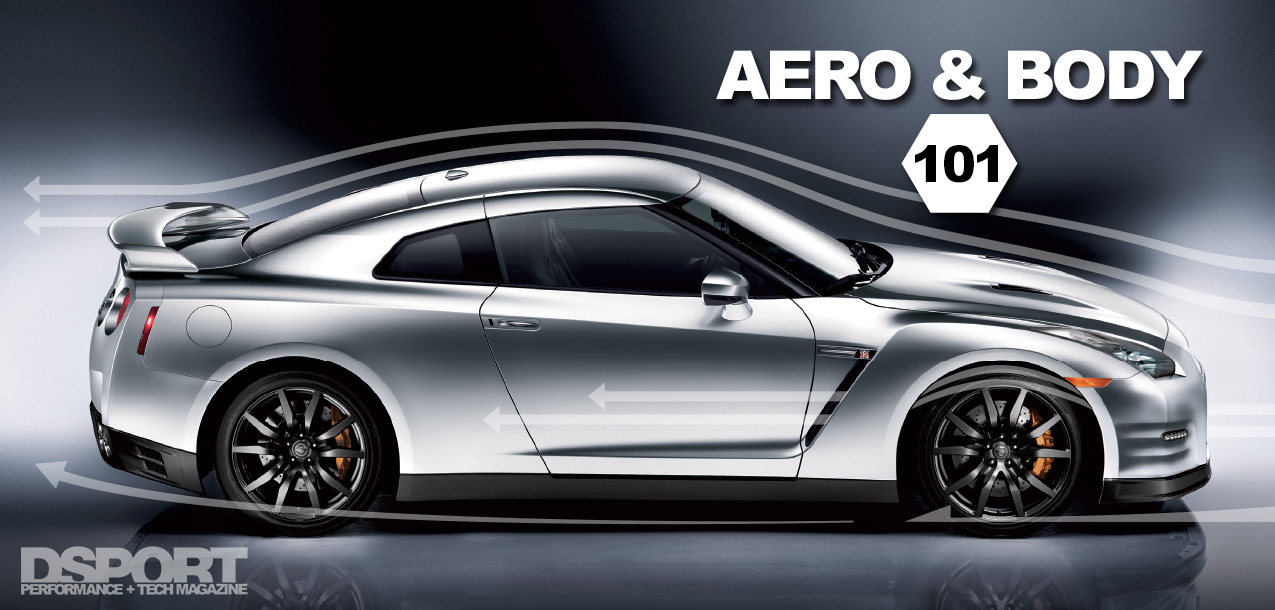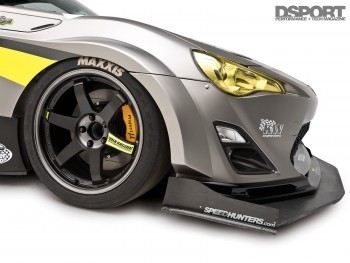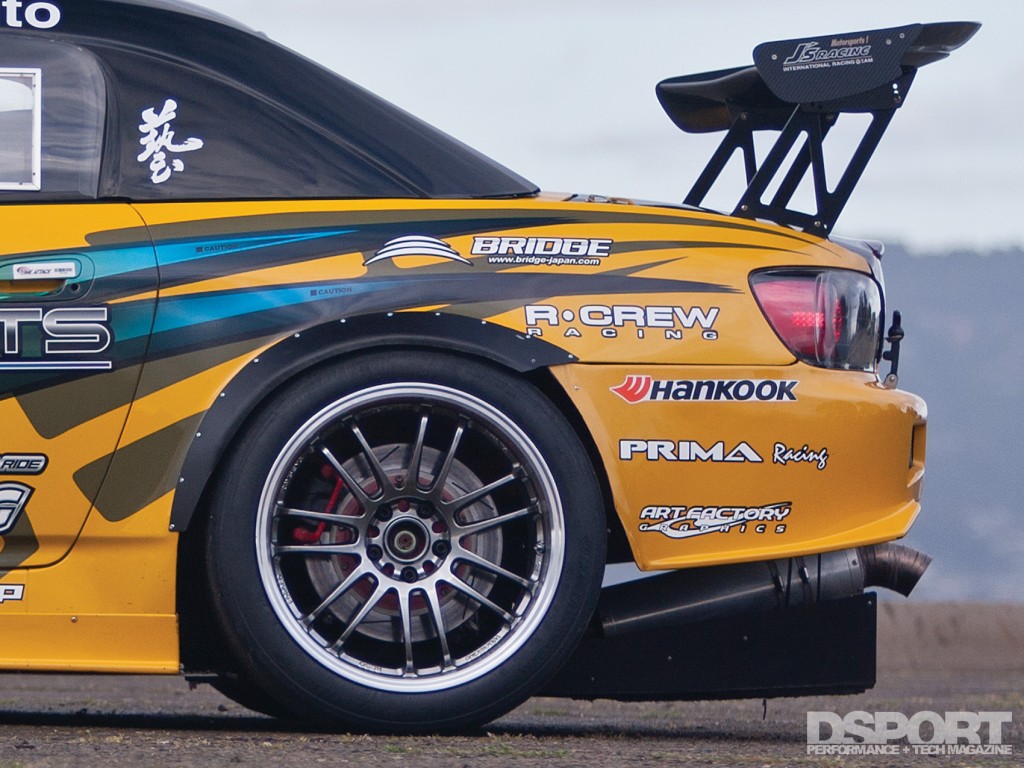Splitting Hairs
Splitters, or diffusers, are without a doubt one of the most important aero devices used. These devices control or “diffuse” the volume of air that is trying to go beneath the front of the car. To feel the effect of what the splitter is doing, lay a piece of paper flat on a table, then try to pick it up. You will feel some resistance as there is a slight vacuum created when the paper is lifted away at speed. That vacuum effect is what the splitter tries to maximize against the road surface, effectively helping to split the air into streams that suck the car down to the ground and redirect over and above the splitter.
Simply adding a diffuser without adequately and properly installing it can actually negate the effects that are intended. The majority of track enthusiasts tend to mount the front of the splitter directly to the urethane bumper. This bumper isn’t a support structure and won’t be able to handle the stress of the load induced by the splitter, putting both the bumper and the splitter under duress. Taking time to mount the splitter properly will allow the splitter to work most efficiently and not incur damage to the splitter or the surrounding urethane bodywork.
Splitter material construction also has to be taken into account. The main factor to consider is material rigidity. If there is any flex in the large surface area of the splitter its effects will be reduced or negated. Another equally important factor to consider is weight. While a denser material will generally be more rigid, the tradeoff in additional weight may not suit your purposes.
Rear diffusers should be mounted solidly and constructed with similar material choice parameters as front diffusers, but with additional parameters taken into account. Warmer air will flow more easily than colder air, reducing the effect that the rear diffuser can have. The rake of the rear diffuser would have to be increased in order to compensate for that and other track air temperature variances.
The Last Air Bender
There is no absolute or one-size-fits-all solution to creating downforce for your particular platform or application. Each of the various aero devices need to be tuned together in order to produce efficient results. Choose your parts accordingly and plan to build your aerodynamic solutions as a set. You won’t waste time and money doing R&D that’s already available.




